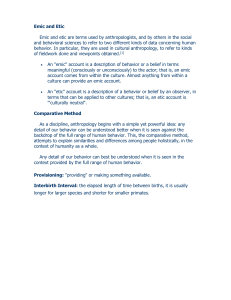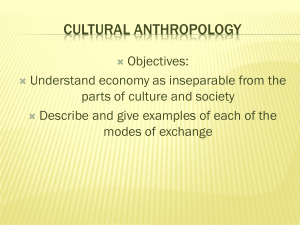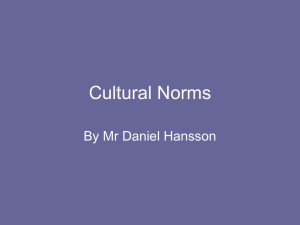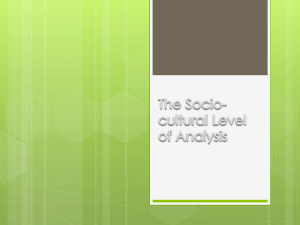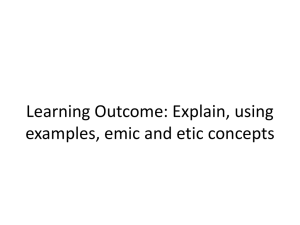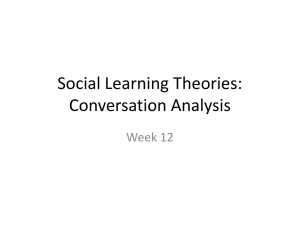Tagmemics
advertisement
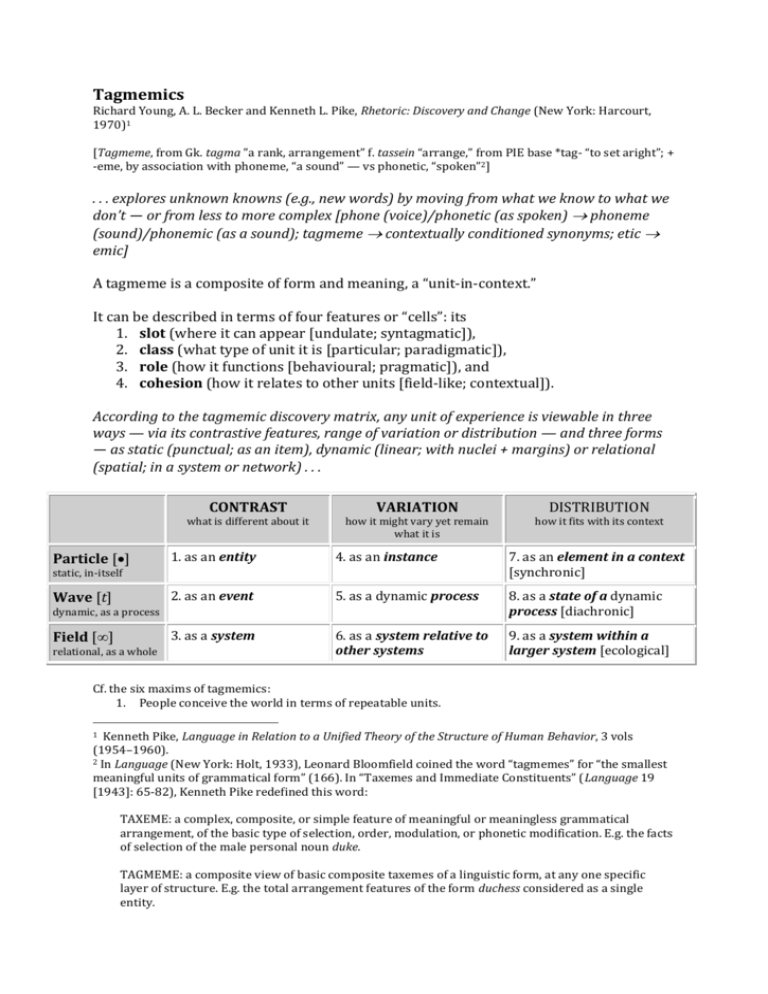
Tagmemics Richard Young, A. L. Becker and Kenneth L. Pike, Rhetoric: Discovery and Change (New York: Harcourt, 1970)1 [Tagmeme, from Gk. tagma ”a rank, arrangement” f. tassein “arrange,” from PIE base *tag- “to set aright”; + -eme, by association with phoneme, “a sound” — vs phonetic, “spoken”2] . . . explores unknown knowns (e.g., new words) by moving from what we know to what we don’t — or from less to more complex [phone (voice)/phonetic (as spoken) phoneme (sound)/phonemic (as a sound); tagmeme contextually conditioned synonyms; etic emic] A tagmeme is a composite of form and meaning, a “unit-in-context.” It can be described in terms of four features or “cells”: its 1. slot (where it can appear [undulate; syntagmatic]), 2. class (what type of unit it is [particular; paradigmatic]), 3. role (how it functions [behavioural; pragmatic]), and 4. cohesion (how it relates to other units [field-like; contextual]). According to the tagmemic discovery matrix, any unit of experience is viewable in three ways — via its contrastive features, range of variation or distribution — and three forms — as static (punctual; as an item), dynamic (linear; with nuclei + margins) or relational (spatial; in a system or network) . . . CONTRAST what is different about it VARIATION how it might vary yet remain what it is DISTRIBUTION how it fits with its context Particle [] 1. as an entity 4. as an instance 7. as an element in a context [synchronic] Wave [t] 2. as an event 5. as a dynamic process 8. as a state of a dynamic process [diachronic] Field [] 3. as a system 6. as a system relative to other systems 9. as a system within a larger system [ecological] static, in-itself dynamic, as a process relational, as a whole Cf. the six maxims of tagmemics: 1. People conceive the world in terms of repeatable units. Kenneth Pike, Language in Relation to a Unified Theory of the Structure of Human Behavior, 3 vols (1954–1960). 2 In Language (New York: Holt, 1933), Leonard Bloomfield coined the word “tagmemes” for “the smallest meaningful units of grammatical form” (166). In “Taxemes and Immediate Constituents” (Language 19 [1943]: 65-82), Kenneth Pike redefined this word: 1 TAXEME: a complex, composite, or simple feature of meaningful or meaningless grammatical arrangement, of the basic type of selection, order, modulation, or phonetic modification. E.g. the facts of selection of the male personal noun duke. TAGMEME: a composite view of basic composite taxemes of a linguistic form, at any one specific layer of structure. E.g. the total arrangement features of the form duchess considered as a single entity. 2. 3. 4. 5. 6. Units of experience are hierarchically structured systems. A unit can be adequately understood only if three aspects of the unit are known: (a) its contrast with other units, (b) its range of variation, and (c) its distribution in larger contexts. A unit of experience can be viewed as a particle, wave or field. Change between units can occur only over a bridge of shared features. Linguistic choices are made in relation to a universe of discourse. Thus, tagmemics is 1. world-ordering (taxonomic) 2. world-discovering (heuristic) 3. world-fashioning (managerial [pragmatic?]) 4. world-founding (epistemic). ETICITY: surface/reality-as-appearance, distance, outsideness/objectivity. Etic inquiry typically yields particles whose wave and/or field relationships to other particles (situatedness) are unthought or unclear. EMICITY: depth (or complexity)/reality-as-experience, nearness, insideness/subjectivity. Emic inquiry is etic inquiry informed by a more thoughtthrough or clearer account of particles within their wave and field relationships. E.g. “aid” and “assist” are etically different (different when taken separately—or in form) but emically the same (the same in context—or in content). We are both inside and outside of the worlds we inhabit, i.e., we are emic and etic to ourselves and to other selves — and, presumably, perceptible as particles, waves and fields. The process of invention — of an argument or idea — goes through four phases: 1. 2. 3. 4. preparation incubation illumination verification heuristical clarification of a problem (a felt dissonance) [analysis] creative exploration of the problem thus clarified [poesis] awaiting a “leap” to imaginative insight [hypothesis] testing it for correspondence, consistency and viability [logos] preparation incubation illumination verification analysis via heuristics creative exploration or poiesis the leap to insight or hypothesis logos or testing its logic
